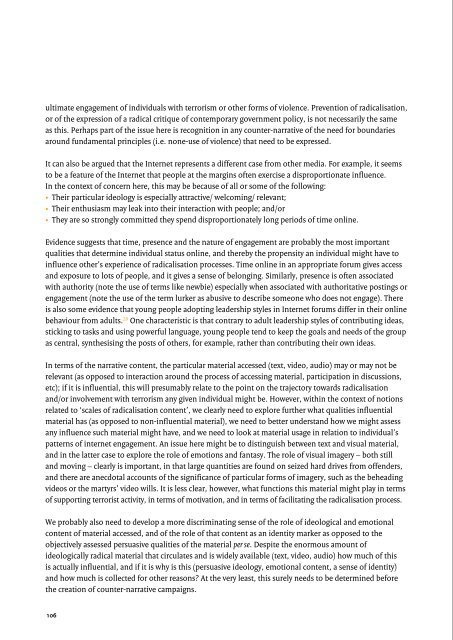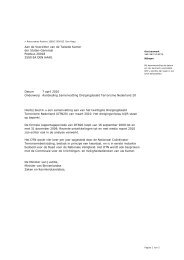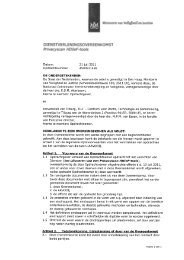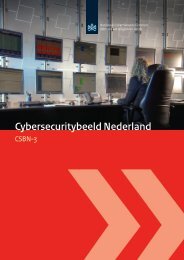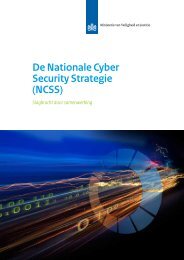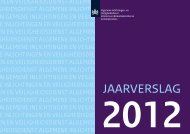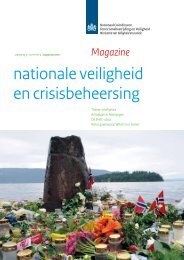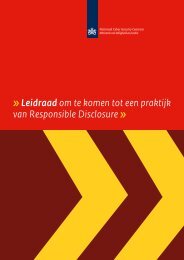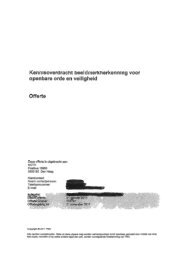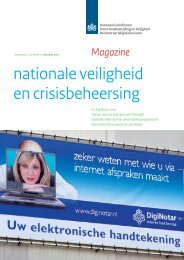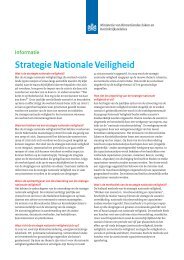Countering Violent Extremist Narratives
Countering Violent Extremist Narratives
Countering Violent Extremist Narratives
- No tags were found...
Create successful ePaper yourself
Turn your PDF publications into a flip-book with our unique Google optimized e-Paper software.
ultimate engagement of individuals with terrorism or other forms of violence. Prevention of radicalisation,or of the expression of a radical critique of contemporary government policy, is not necessarily the sameas this. Perhaps part of the issue here is recognition in any counter-narrative of the need for boundariesaround fundamental principles (i.e. none-use of violence) that need to be expressed.It can also be argued that the Internet represents a different case from other media. For example, it seemsto be a feature of the Internet that people at the margins often exercise a disproportionate influence.In the context of concern here, this may be because of all or some of the following:• Their particular ideology is especially attractive/ welcoming/ relevant;• Their enthusiasm may leak into their interaction with people; and/or• They are so strongly committed they spend disproportionately long periods of time online.Evidence suggests that time, presence and the nature of engagement are probably the most importantqualities that determine individual status online, and thereby the propensity an individual might have toinfluence other’s experience of radicalisation processes. Time online in an appropriate forum gives accessand exposure to lots of people, and it gives a sense of belonging. Similarly, presence is often associatedwith authority (note the use of terms like newbie) especially when associated with authoritative postings orengagement (note the use of the term lurker as abusive to describe someone who does not engage). Thereis also some evidence that young people adopting leadership styles in Internet forums differ in their onlinebehaviour from adults. 28 One characteristic is that contrary to adult leadership styles of contributing ideas,sticking to tasks and using powerful language, young people tend to keep the goals and needs of the groupas central, synthesising the posts of others, for example, rather than contributing their own ideas.In terms of the narrative content, the particular material accessed (text, video, audio) may or may not berelevant (as opposed to interaction around the process of accessing material, participation in discussions,etc); if it is influential, this will presumably relate to the point on the trajectory towards radicalisationand/or involvement with terrorism any given individual might be. However, within the context of notionsrelated to ‘scales of radicalisation content’, we clearly need to explore further what qualities influentialmaterial has (as opposed to non-influential material), we need to better understand how we might assessany influence such material might have, and we need to look at material usage in relation to individual’spatterns of internet engagement. An issue here might be to distinguish between text and visual material,and in the latter case to explore the role of emotions and fantasy. The role of visual imagery – both stilland moving – clearly is important, in that large quantities are found on seized hard drives from offenders,and there are anecdotal accounts of the significance of particular forms of imagery, such as the beheadingvideos or the martyrs’ video wills. It is less clear, however, what functions this material might play in termsof supporting terrorist activity, in terms of motivation, and in terms of facilitating the radicalisation process.We probably also need to develop a more discriminating sense of the role of ideological and emotionalcontent of material accessed, and of the role of that content as an identity marker as opposed to theobjectively assessed persuasive qualities of the material per se. Despite the enormous amount ofideologically radical material that circulates and is widely available (text, video, audio) how much of thisis actually influential, and if it is why is this (persuasive ideology, emotional content, a sense of identity)and how much is collected for other reasons? At the very least, this surely needs to be determined beforethe creation of counter-narrative campaigns.A further question to pose is, if we think of this in terms of behavioural products, what do people do withthe material they access, either on- or offline – is it catalogued (if so how and using what parameters), isit simply stored, is it read, is it used as a token in exchanges etc.? The answers to this for any individual arelikely to be multiple, and vary over time – a sense of process therefore also needs to be developed. We knowfor instance from other areas like child pornography that collecting and assembling material is not alwaysmotivated by the obvious reasons and indeed problematic material can be collected for a number of whatat times might appear to be contradictory reasons. The role of fantasy as a motivating element needs to beexplored in this context. However, a fundamental dilemma we face is knowing who will ultimately participatein violence as a result of involvement with such material, who will become radically sophisticated but notexpress this in violence, and who is just playing with challenging thoughts and ideas. Age and developmentalstatus may also be factors here.In the particular case of the role of the Internet, we know that in general the Internet may:• Alter moods;• Lessen social risk and remove inhibitions;• Increase a sense of anonymity and invulnerability;• Enable multiple self representations;• Show evidence of group dynamics;• Validate, justify and offer an exchange medium;• Challenge old concepts of regulation;• Disrupt and challenge conventional hierarchies; and• Offer opportunities for emotional avoidance.All of these are relevant factors in helping us understand the processes at work in the way interactionwith content on the Internet can influence radicalisation, and these should be taken into account in thedevelopment of counter-narrative initiatives. The absence of empirical data, although a long-term goal,should not limit the recognition of the significance of these factors.Evidence suggests that people may often be aware of their problematic behaviour, and may recognise theneed to address it, but at the same time may feel powerless or lacking in the necessary knowledge to developstrategies to reduce it. This may particularly be the case for people who have moved along a trajectorytowards violence, and can recognise – in however limited a fashion – the need to address their problematicbehaviour before crossing some legal, social or personal boundary. A further issue relates to people understandingthe legal issues engagement with radical material might present for them, and who may notrecognise the problematic qualities to what they are doing. An element of any counter-narrative thereforeshould be the provision of assistance to reach out to people in these situations.In a general sense, we should seek to place any counter-narrative initiative into our broader understandingof what we mean by preventing problematic and at times probably illegal behaviour. Brantingham andFaust identify three kinds of crime prevention initiatives that may be relevant to our understanding of thedevelopment of counter-narrative strategies:1. Primary prevention, focussed on stopping a crime before it occurs,2. Secondary prevention, directed at individuals thought to be at high risk of committing an offence; and3. Tertiary prevention, focussed on known offenders. 29106 107


